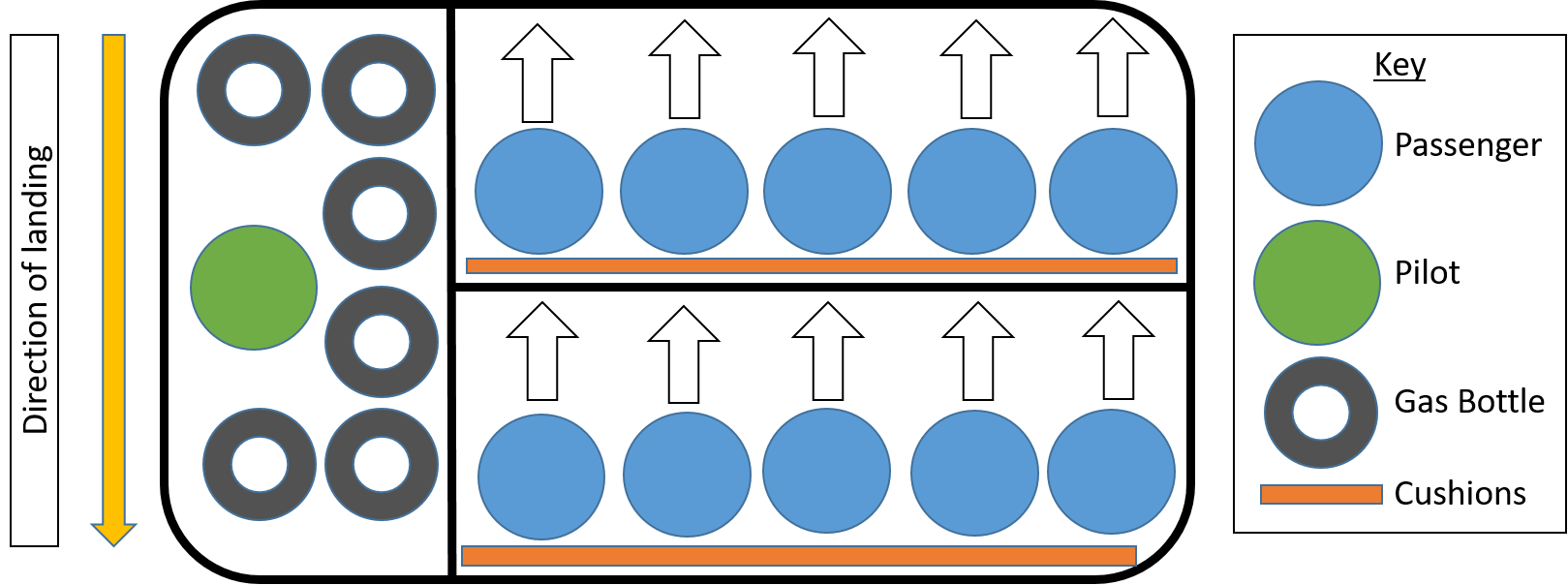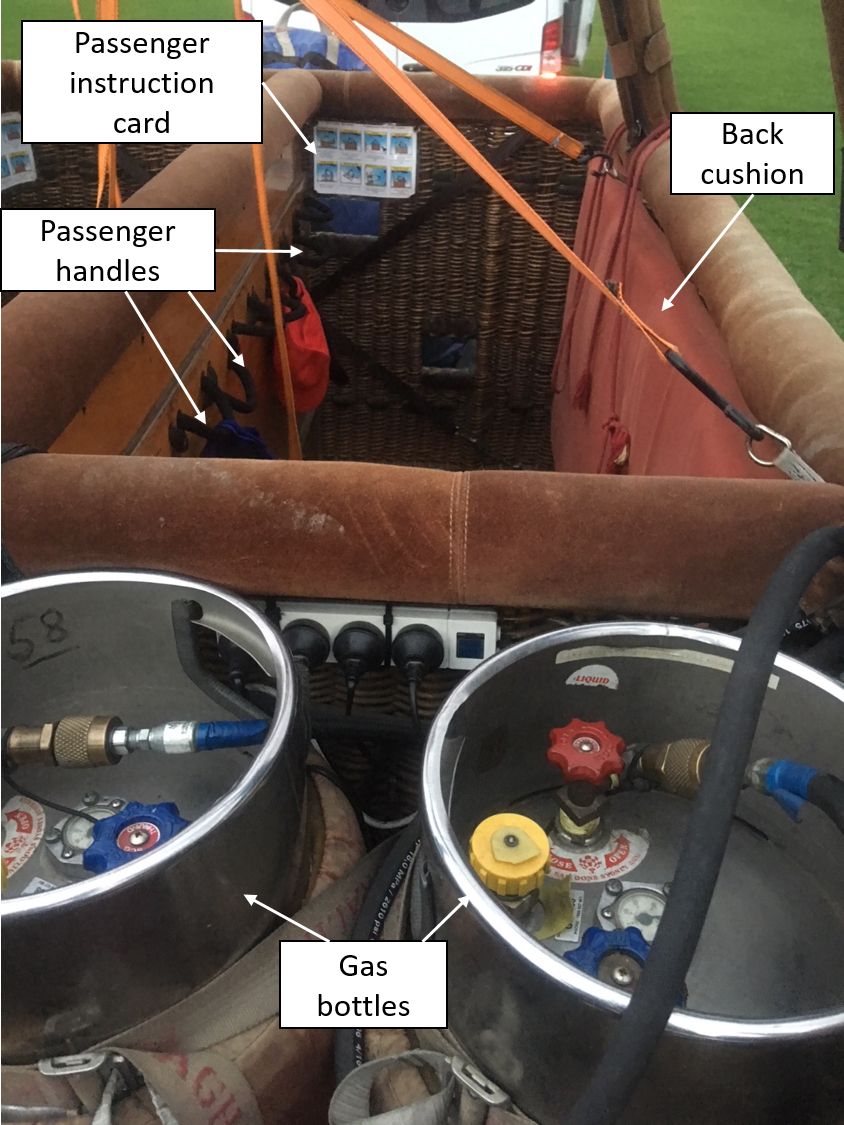What happened
On 2 April 2018 at about 0615 Eastern Standard Time (EST), a Kavanagh Balloon E-240, registered VH-DUX, departed from Fawkner Park, Victoria (Vic), on a passenger charter flight to Westerfolds Park, Templestowe, Vic (Figure 1). On board the balloon were a pilot and 10 passengers. A second company balloon also departed around the same time.
Figure 1: Map showing take-off and landing locations

Source: Google, annotated by ATSB
The evening before the flight, the pilots of both balloons reviewed the weather forecast for the flight. The forecast wind speed for the planned flight altitude was a 10–12 knot south-westerly. Using this information, the pilots elected to conduct the flight with Westerfolds Park as their target landing site.
On arriving at Fawkner Park on the morning of the flight, the pilots again reviewed the forecast and checked the actual wind speed and direction using a pibal.[1] The pilot of VH-DUX later reported the wind speed was a 7 knot south-westerly at ground level. Prior to the flight, the ground crew and the pilots gave the passengers several safety briefings. These briefings included what to expect during the take-off, flight and landing, and the required positions in the basket for these stages of flight. The pilot reported that given the conditions he expected to conduct a lay-over landing, during which the basket would tip and drag upon landing.
About 45 minutes into the flight, the pilot reduced altitude to allow the passengers a better view. The pilot later reported the wind at this point was about 10 knots at a height of about 200–300 ft above ground level, and noted a change in wind direction, to include a more westerly component. The pilot communicated with the pilot of the other balloon and determined that they would not be able to land at their target landing site of Westerfolds Park.
The pilot of VH-DUX then began looking for an alternate landing site along the now anticipated flight path, and identified Rosanna Golf Course as a suitable landing site.
In preparation for the landing, the pilot used the rotation vents[2] to orient the balloon so that the long side of the basket was across the direction of travel and the side with the cushions would touch first.
About five minutes before landing, the pilot informed the passengers that the basket might end up on its side and he instructed them to assume the proper landing position, which included:
- standing shoulder to shoulder
- knees slightly bent
- feet together and flat on the floor
- full back pushed against the cushions[3]
- holding onto the handles.
The pilot later reported that all passengers adopted the correct position. About two minutes later, the pilot began descending the balloon slowly using the parachute vent.[4] At the beginning of the golf course, the pilot rapidly descended the balloon to land in the available space and the wind conditions, using the Lite Vent.[5] The balloon touched down and the pilot conducted a lay-over landing (Figure 2).
During the landing, one passenger sustained minor injuries and the aircraft was not damaged.
Figure 2: Balloon drag marks

Source: Global Ballooning, annotated by ATSB
Aircraft loading details
The maximum passenger capacity of the balloon was 11 people. During the landing, the pilot and the passengers stood as shown in Figure 3, with the passengers facing the direction indicated by the white arrows.
Figure 3: Basket loading configuration

Source: ATSB (not to scale)
The basket featured foam padding around the top bars and foam cushions for the passengers’ backs with handles for the passengers to hold (Figure 4). When positioned for landing, the passengers’ shoulders were roughly at the level of the top of the basket sides, or just below.
The passenger instruction cards were affixed to the interior of the basket (Figure 4).
Figure 4 Interior of basket

Safety analysis
Prior to the flight, the pilot reviewed the weather forecast and noted that the wind conditions were high, but within acceptable limits. He elected to conduct the flight, considering that he may need to conduct a lay-over landing.
During the flight, the pilot noted that the wind strength was as forecast. He then prepared for a lay‑over landing and briefed the passengers in preparation.
During the landing, a passenger sustained a minor injury. The investigation could not determine the cause of the injury.
Findings
These findings should not be read as apportioning blame or liability to any particular organisation or individual.
- Due to the expected wind conditions, the pilot conducted a lay-over landing, during which a passenger was injured.
Safety message
This incident underlines the importance of following the safety procedures and ensuring that all passengers fully understand the instructions. Due to the effective communication and briefings, the passengers were able to assume the correct landing position, which resulted in only one passenger suffering minor injuries.
The United States Federal Aviation Administration publication: Balloon Flying Handbook provides further information on high-wind landings and passenger briefings and management.
Purpose of safety investigationsThe objective of a safety investigation is to enhance transport safety. This is done through:
It is not a function of the ATSB to apportion blame or provide a means for determining liability. At the same time, an investigation report must include factual material of sufficient weight to support the analysis and findings. At all times the ATSB endeavours to balance the use of material that could imply adverse comment with the need to properly explain what happened, and why, in a fair and unbiased manner. The ATSB does not investigate for the purpose of taking administrative, regulatory or criminal action. TerminologyAn explanation of terminology used in ATSB investigation reports is available here. This includes terms such as occurrence, contributing factor, other factor that increased risk, and safety issue. Publishing informationReleased in accordance with section 25 of the Transport Safety Investigation Act 2003 Published by: Australian Transport Safety Bureau © Commonwealth of Australia 2018
Ownership of intellectual property rights in this publication Unless otherwise noted, copyright (and any other intellectual property rights, if any) in this report publication is owned by the Commonwealth of Australia. Creative Commons licence With the exception of the Coat of Arms, ATSB logo, and photos and graphics in which a third party holds copyright, this publication is licensed under a Creative Commons Attribution 3.0 Australia licence. Creative Commons Attribution 3.0 Australia Licence is a standard form licence agreement that allows you to copy, distribute, transmit and adapt this publication provided that you attribute the work. The ATSB’s preference is that you attribute this publication (and any material sourced from it) using the following wording: Source: Australian Transport Safety Bureau Copyright in material obtained from other agencies, private individuals or organisations, belongs to those agencies, individuals or organisations. Where you wish to use their material, you will need to contact them directly. |
__________
- Pibal – a small helium filled weather balloon that the pilots use to help assess the winds aloft.
- Two rotation vents on either side of the balloon envelope control the rotation of the balloon to left or right, for passenger viewing or for alignment when landing. The pilot operates these using rotation vent lines. The vents do not steer the balloon.
- This means that the passengers are facing away from the direction of travel. The pilot faced the direction of travel.
- The parachute vent (of the Lite Vent system) is for use inflight to allow a controlled release of hot air to initiate a descent or to arrest a climb.
- The Lite Vent is a centre-pull deflation vent that allows for a clear opening above and no restriction to airflow. This means that the balloon envelope empties much faster and the balloon is faster to stop.


